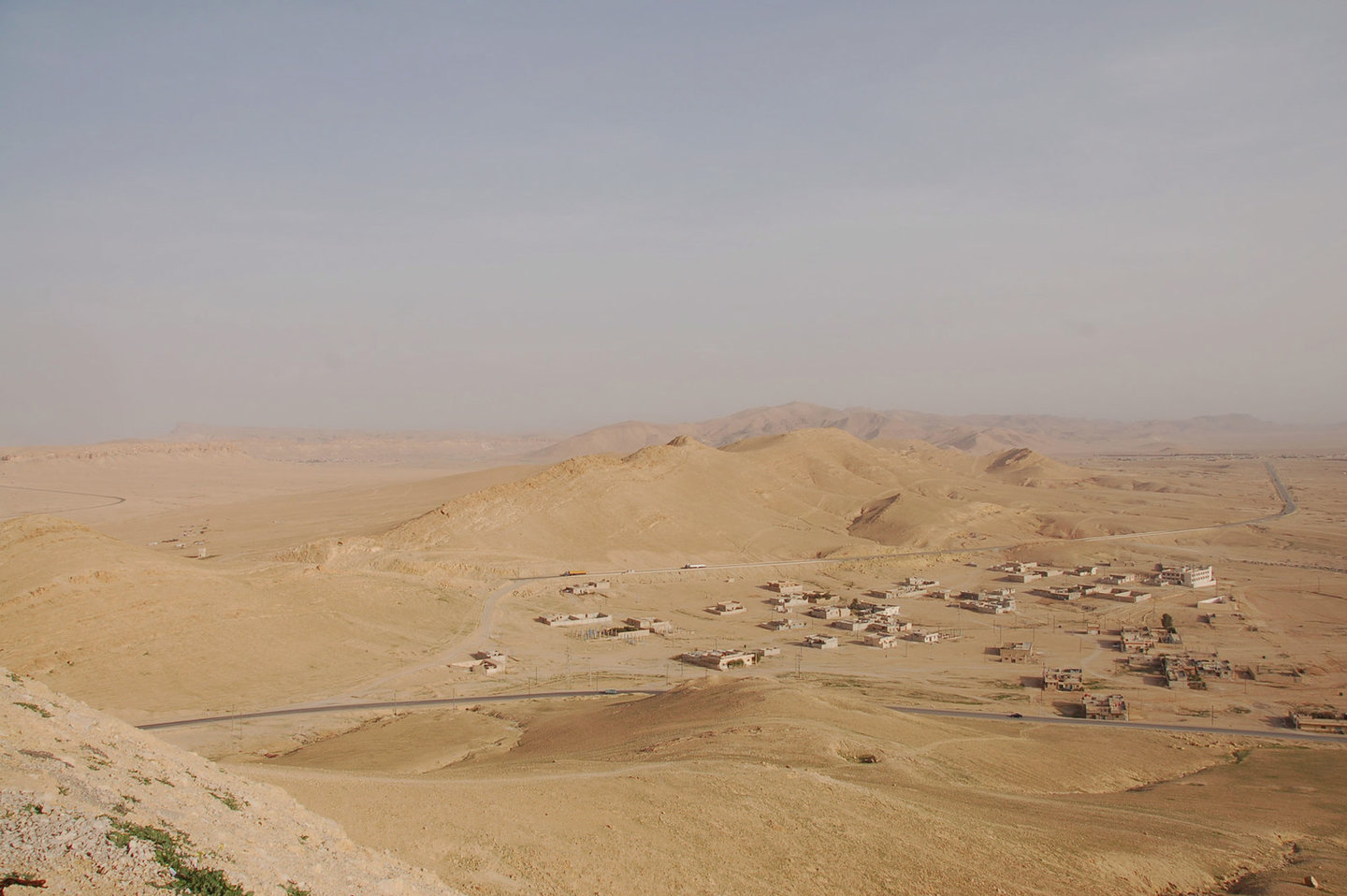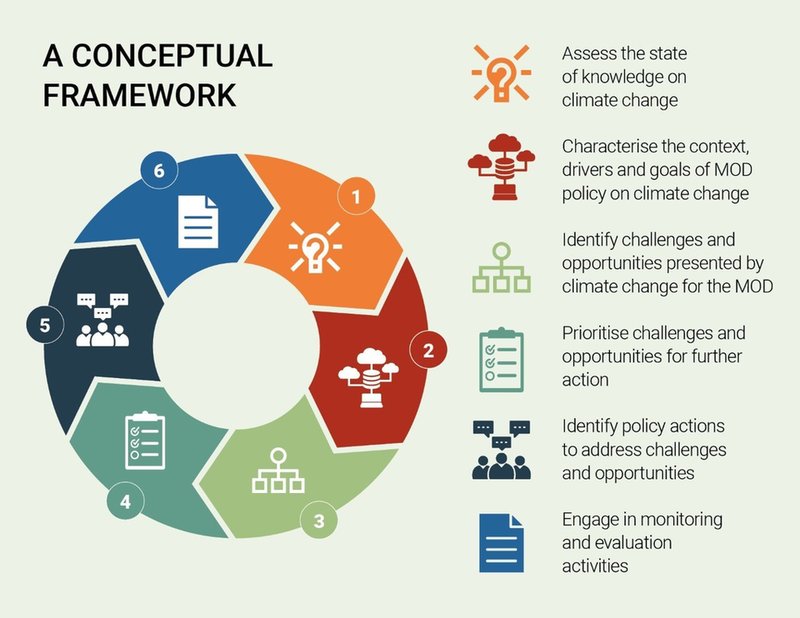
FEature
Climate change and conflict: cracking the conundrum
The effects of climate change can cause or exacerbate conflict, creating a conundrum on a global scale. Berenice Healey asks RAND and the Environmental Justice Foundation what policymakers should know about global heating.
Last November’s Remembrance Sunday event at the Cenotaph in London was a little different, with a national Covid-19 lockdown preventing the usual crowds of veterans and onlookers gathering in Whitehall.
Ahead of the 11 am memorial, members of environmental movement Extinction Rebellion, including army veteran Donald Bell, laid a wreath of poppies at the Cenotaph with a banner saying: “Honour their sacrifice: Climate change means war” and stood for two minutes’ silence.
The understated protest drew criticism from Prime Minister Boris Johnson, among others, who dubbed it ‘profoundly disrespectful’. The group said the protest aimed to bring attention to the report ‘A Changing Climate: Exploring the implications of climate change for UK defence and security’. It was commissioned by the UK Ministry of Defence’s (MOD) internal think tank the Development, Concepts and Doctrine Centre (DCDC) from non-profit research institute RAND Europe.
The report details the result of studies led by RAND senior analyst Kate Cox and points to a growing recognition that climate change may aggravate existing threats to international peace and security.
It sets out an analytical framework to help decision-makers systematically examine the implications of climate change for defence and identifies the high-level impact of climate change on defence lines of development (DLODs). This encompasses all the aspects of defence capability management, such as concepts and doctrine, equipment, infrastructure, logistics and training.
Climate change and conflict
RAND senior analyst for defence, security and infrastructure Lucia Retter is leading the second phase of this study. She explains that A Changing Climate examines evidence of the dynamics between climate change and conflict, some indicating a direct causal relationship, others identifying climate change as a threat multiplier, which means recognising climate change as a factor that exacerbates already existing tensions.
“For example, rising sea levels in coastal regions, severe droughts and natural resource shortages, including shortages of food and water, can trigger migration, which is a known factor contributing to political instability, tensions, or even conflict,” she says.
“Similarly, destruction of people’s habitats and livelihood due to climate change impacts, especially if these are taking place in areas with poor governance, could increase already existing tensions, political unrest – for example, civilian protests and rioting – or even radicalisation and likelihood of violent conflict. As DCDC’s analysis of Global Strategic Trends (2018) notes: ‘criminal, or even terrorist, groups could take advantage of the stresses that climate change may bring’.”
The challenges presented by climate change for carrying out military operations are likely to require a more coordinated approach between defence and other actors.
A Changing Climate also shows climate change will likely impact all aspects of delivering defence capability and military operations, from doctrine and concepts on the strategic level to the operational and tactical levels, which includes implications for defence equipment, logistics, training.
Ritter says the challenges presented by climate change for carrying out military operations are likely to require a more coordinated approach between defence – the MOD and the British Armed Forces– and other actors, including other government departments, NGOs and international actors.
“This will be particularly important when we think about responding to natural disasters linked to climate change or violent conflict closely related to climate change impact,” Retter says. “An effective response would likely need to draw on a combination of diplomatic, defence and development efforts. Climate-related changes will also necessitate defence equipment that can operate in harsher environments – often different from what it was designed for originally.”
She adds that this will require the development of new equipment and adapting existing equipment to ensure that the armed forces have sufficiently resilient gear, for example, ships that are resistant to extremely cold waters in the Arctic and helicopters that perform effectively in high temperatures and extreme dust.
Lucia Retter, RAND senior analyst for defence, security and infrastructure is leading the second phase of the study.

The role of technology
Retter believes the Integrated Review - which wasn't yet published at the time of our conversation - could take advantage of the UK and global momentum focusing on tackling climate change and its impacts, with technology playing an important role.
“Technology and innovation are natural allies of environmental sustainability. Defence could adopt AI-enabled solutions to optimise energy consumption, delivery of logistics, predictive maintenance; additive manufacturing to minimise warehousing demands and transport costs for replacement parts and related carbon footprint; and robotics and autonomous systems, for example for re-supply of bases in a more energy-efficient way,” she says.
“Perhaps equally important are the efforts undertaken in preparation of the MOD’s Climate Change and Sustainability Strategy that is due to be published in the next couple of months. Under the leadership of Lieutenant General Richard Nugee, this strategy focuses on enhancing operational capability in changing climatic conditions and on identifying and embedding sustainable solutions to enable UK defence to meet its net-zero carbon emissions targets. Our second study, in particular, has been directly informing the drafting of the strategy.”
Climate change is one of the biggest challenges of our generation and requires a coordinated set of efforts between a range of actors.
But Retter warns that climate change is one of the biggest challenges of our generation and requires a coordinated set of efforts between a range of actors.
“Defence is one among many here, even though its role is important, particularly given the ability of the military to effectively respond to humanitarian and natural disasters at very short notice and with great effectiveness, and also bearing in mind that defence has been, to date, one of the prominent contributors to greenhouse gas emissions,” she says.
The second phase of the study Retter is undertaking takes the analytical framework from the first study and applies it to the implications of climate change for the delivery of defence logistics in the context of humanitarian assistance and disaster relief and military aid to the civil authorities.
The upcoming report, ‘Crisis response in a changing climate’ is due for publication this spring. It has a wider target audience of policymakers involved in crisis response as well as any organisations delivering logistics into challenging environments or areas affected by climate disasters.

RAND’s conceptual framework for the study.
Climate change as threat multiplier
Non-governmental organisation the Environmental Justice Foundation (EJF) furthers the argument that climate change acts as a threat multiplier, driving up the probability of conflict.
Co-founder and director Steve Trent explains: “Global heating takes existing stresses, conflicts and challenges and amplifies them, often driving a manageable situation into a crisis or a conflict.
“Climate change will affect resource scarcity, placing strains on the essential resources that underpin human, national and international security – including food and water. These are likely to heighten the scale of political turmoil, state instability and mass migration in the future, particularly in regions with poor governance and existing state fragility.
“In Syria, some 1.3 million to 1.5 million people were on the move from drought-stricken regions before a single gunshot was fired. While climate change is most clearly and most certainly not the only cause of conflict in Syria, it was a contributing factor, it was a threat multiplier linked to complex interactions between political, economic, religious and ethnic forces.”
Trent warns that, ultimately, the climate crisis will make some areas uninhabitable and will force tens of millions of people from their homes, displacing them within countries and driving trans-boundary migration. This will likely cause social and economic tensions and enhance the potential for conflict alongside the suffering.
“In turn, countries that experience conflict are disproportionately affected by climate crisis impacts. This dramatically reduces the ability of communities to respond to them and further compounds resource scarcities and vulnerabilities,” he says.
There are no fences or walls that can defend individual nations against climate change; this is a global crisis requiring coordinated, committed international action.
Over the last ten years, EJF has witnessed increasing public and political focus on and recognition of the human impacts of climate and environmental changes.
“There is also an increasing sense of urgency – more people, governments, and businesses, are understanding that the climate emergency is not some far off, gradual change but something that is already happening here and now, with devastating impacts for communities affected first and worst by global heating,” says Trent.
“It remains a continuing challenge to focus global action on both mitigation and adaptation and protection for those communities already vulnerable to the impacts of global heating already baked into our climate.”
Trent says EJF’s message to policymakers is that global heating exacerbates existing vulnerabilities; this will become worse and reveals the deep injustices linked to the climate crisis.
“There are no fences or walls that can defend individual nations against climate change; this is a global crisis requiring coordinated, committed international action,” he says. “These trends will continue to affect communities worldwide. Some communities face a lack of resources and state support to adapt.
“Preventive action is needed as early as possible and must be based on a holistic, human-rights based approach. As the climate-conflict nexus is a multidimensional issue, it requires cross-sectoral and context-sensitive action that places people at the centre.”